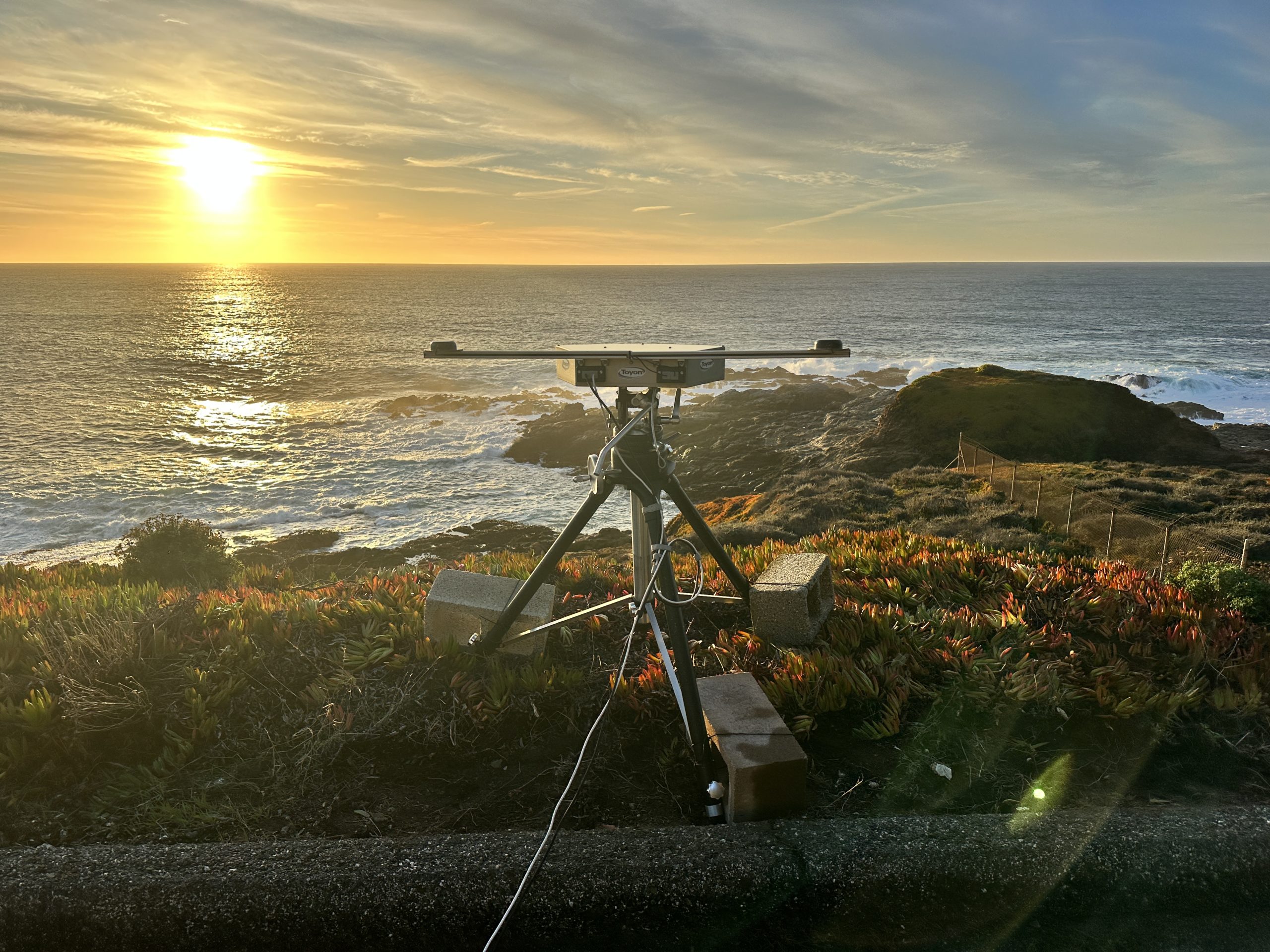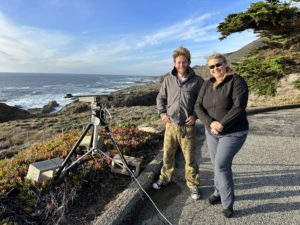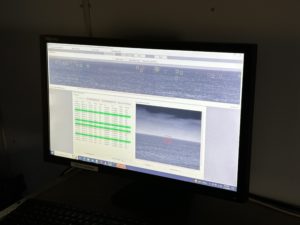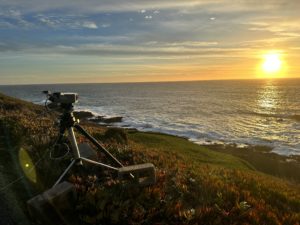
Marine Observer Demonstrates Successful On-shore Deployment for Gray Whale Migration Detection
Marine Observer kicked-off the new year with a successful on-shore technology deployment. The 10-day testing exercise took place at a research station near Carmel-by-the-Sea, California to validate an automatic system to detect and track gray whales traveling close to the shoreline while on their annual south-bound migration. The field testing was conducted in partnership with a government environmental group with funding from a wind energy company.

Marine Observer Team Members Nolan Sullivan and Christina Wright with the infrared camera at a research station near Carmel, California.
Marine Observer is a wide field-of-view infrared camera system that uses state-of-the art machine learning algorithms to detect marine mammals for research and to mitigate human impacts on whales from events such as ship strikes or acoustic disturbances.
Marine Observer was originally developed in partnership with NOAA in 2012. The latest iterations of the system demonstrate an ongoing evolution to a powerful and easy to use product. In fact, this latest deployment was a unique opportunity to compare one of the original camera systems side-by-side with the most recent Marine Observer IR camera. The recent test confirmed that the new system is much easier to use, quick to set-up and proves to be even more reliable than its predecessor. “The new Marine Observer system is very pleasant to work with and has really come a long way from the early models,” said an IR camera operator on site.

Marine Observer software in action. The red box in the lower right hand corner of the screen indicates an automatically detected gray whale blow.
In addition to the side-by-side testing of both cameras, data collected by human observers were used as a control and to confirm and compare to whale sightings from the IR systems.
The testing ran from January 14-24, 2024, providing researchers with 7 full days of overlapping data from the two camera systems and the human observers. The long-wave-infrared sensors allow researchers to detect whales during the day and night. To evaluate performance in darkness, IR video data were collected from both IR systems overnight.
“This was a great deployment,” shared Christina Wright, Chief Biologist of Marine Observer, who was present for the duration of the testing. “We were able to compare the performance of our latest wide field-of-view camera technology (about 66 degrees) side-by-side one of our original models that has a smaller, 26-degree field-of-view. Both systems worked well, but the newer system is sleek and easy to use and definitely outshines its predecessor.”

Marine Observer can be used on-shore or vessel mounted. The recent deployment near Carmel, California demonstrated the on-shore capabilities of the camera and software.
The Marine Observer IR camera can easily be set-up for use on land or at sea and can be mounted onto any vessel for endless versatility. This recent testing was conducted from shore with the camera mounted to a tripod set-up.
“We express deep gratitude for our work with our partners as we fulfill our mission of supporting whale conservation efforts. Marine Observer continues to prove itself as a powerful technological tool to provide valuable data about whales and other marine mammals which can then be used to inform scientists, government, and industry and to mitigate human impacts on wildlife,” shared Wright.
Interested in a using Marine Observer? Contact one of our staff today to learn more!

